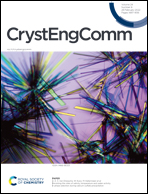Simultaneously higher thermal stability and lower resistance drifting for Sb/In48.9Sb15.5Te35.6 nanocomposite multilayer films
Abstract
In this study, In48.9Sb15.5Te35.6 (IST) was introduced as a stable interlayer to improve the weak amorphous thermal stability and large resistance drift of Sb films. The results showed that Sb atoms tend to bond with In atoms to form In–Sb bonds at the multilayer interfaces, thus improving the thermal stability of multilayer films. Compared with Sb films, Sb/IST had a higher phase transition temperature (∼196 °C) and crystallization activation energy (∼2.23 eV). The surface scratch test revealed that the adhesion of the Sb/IST multilayer film to the substrate was stronger. The separation of the interfaces reduced the phase transition range and made the density change smaller before and after crystallization (∼3.1%). Grain refinement resulted in a decrease in resistance drift and electrostatic potential on the film surface for the Sb/IST film. A phase change memory device based on the Sb/IST multilayer film successfully realized the reversible operation of SET and RESET. The feasibility of the Sb/IST multilayer films as a kind of phase change material with high stability and low resistance drift was verified.



 Please wait while we load your content...
Please wait while we load your content...